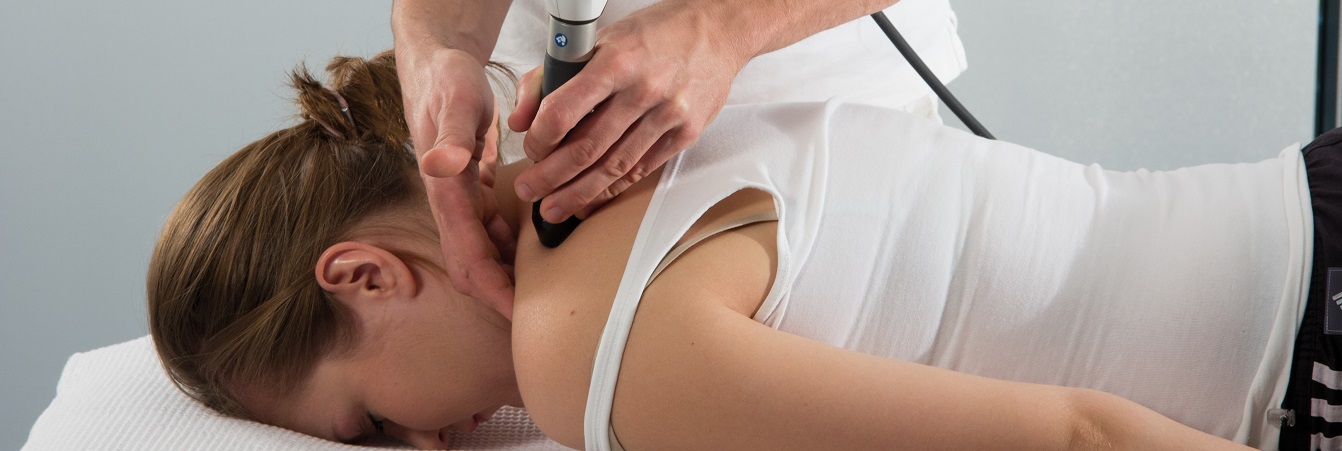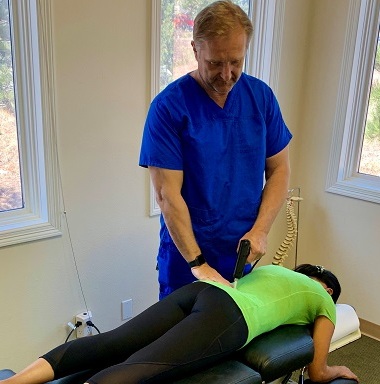950 W Baptist Rd #130
Monument, CO 80132
EPAT SHOCKWAVE THERAPY FAQS

WHAT IS EXTRACORPOREAL SHOCKWAVE THERAPY(ESWT) TECHNOLOGY?
Extracorporeal Pulse Activation Technology (EPAT) therapy is a non-invasive modern and highly effective treatment method: high-energy sound waves are introduced into the painful areas of the body. Shockwave technology accelerates the healing process in the body by stimulating the metabolism and enhancing blood circulation to regenerate damaged tissue. Strong energy pulses are applied to the affected area. These pulses occur for short periods of time, creating micro-cavitation bubbles that expand and burst. The force created by these bubbles penetrates tissue and stimulates cells in the body that are responsible for bone and connective tissue healing.
EPAT can successfully address acute and chronic pain such as: knee pain, heel pain, foot pain, ankle pain, hamstring pain, back pain, neck pain, shoulder pain, elbow pain, wrist pain, and hand pain. It is also used to address sports injuries and much more.
EPAT is used internationally for conditions all over the body. In the United States, an FDA study was performed for patients who suffer from chronic plantar fasciitis with or without the presence of a heel spur. The results were an amazing average reduction in pain of 92% with only one treatment. (This data reflects the results of the patients who participated in a one-year follow-up study with the Dornier EPOS Ultra machine.)
EPAT benefits patients because their condition can be treated extracorporeally, meaning outside of the body. Because the treatment is non-invasive many of the expenses and risks of surgery are eliminated.
WHAT TYPE OF CONDITIONS CAN BE TREATED WITH EXTRACORPOREAL SHOCKWAVE THERAPY(ESWT)?
EPAT shockwave can successfully address acute and chronic pain such as: knee pain, heel pain, foot pain, ankle pain, hamstring pain, back pain, neck pain, shoulder pain, elbow pain, wrist pain, and hand pain. It is also used to address sports injuries and much more.
HOW IS THE TREATMENT PERFORMED?
Shockwave treatment is noninvasive. Gel is applied to the treatment area; pressure waves are then released through the applicator as it is moved over the treatment area.
HOW MANY TREATMENTS ARE GENERALLY NEEDED?
The number of sessions needed depends on the condition that is being treated. Each treatment session takes between 10-15 minutes and can vary depending on the condition that is being treated.
WHAT TYPE OF RESULTES ARE EXPECTED?
Beneficial effects are often experienced after only 1 or 2 treatments and there is no downtime. Many patients report immediate pain relief after treatment. The technology has a 91% success rate as per clinical studies, patients treated report being pain free and /or have a significant reduction in pain.The non-surgical therapy for pain eliminates pain and restores mobility, thus improving patient’s quality of life.
WHAT ARE THE POSSIBLE SIDE EFFECTS?
Treatment with EPAT has virtually no side effects. In some cases, patients may experience minor discomfort for a few days. Patients can return to work after treatments and in most all cases there is no down time
WHO IS A CANDIDATE FOR SHOCKWAVE?
Most people are good candidates for EPAT treatment however patients who are pregnant, have a pacemaker or current cancer are not suitable for treatment with EPAT. Your doctor will provide you with information about conditions you may have that would affect your ability to undergo treatment.
WHY CONSIDER GETTING SHOCKWAVE THERAPY?
Shockwave Therapy has a proven success rate that can be as effective or more effective than other methods such as surgery or pharmaceuticals without the with the risks, complications or long recovery times. Shockwave Therapy treatments are non-invasive and promote accelerated recovery.
- Non-Surgical
- No Side Effects
- Accelerated Healing
- Ease of Use
- Affordable
- 91% Success Rate*
- Non-invasive
- No Anesthesia Required
- No Risk of Infection
- No Scarring
- No Downtime
- Over 80% Patient Satisfaction
- Faster, Easier Healing
HOW EFFECTIVE IS ESWT?
Our own experience and the FDA EPAT study using our treatment protocol shows an overwhelming success rate. In the study, a group of 150 patients was asked to rate their pain level on a scale of 1 to 10. The average pain level before treatment was 7.7.
After receiving one EPAT treatment, the patients were asked one year later to rate their pain level again on a scale of 1 to 10. The patients who reported had an average pain score post-EPATT of 0.6. This is a 92% reduction in pain and a much higher rate of success than any non-surgical or surgical procedure. More importantly, EPAT is very safe.
WHAT IS INVOLVED IN THE PROCEDURE?
EPAT benefits patients because their condition can be treated extracorporeally, meaning outside of the body. Since EPAT is non-invasive, there is no lengthy recovery period, virtually no time off from work or risk of causing further damage. The same cannot be said with surgery.
During the treatment, you lie back comfortably with the area to be treated resting on the machine on a soft, water-filled membrane. To ensure patient comfort, a local anesthesia is used. The technician will make sure you are comfortable throughout the procedure. The technician uses an ultrasound scan to view and target the damaged location. During the treatment, you will hear repetitive clicking sounds.
If you are nervous or anxious about treatment talk to your doctor or treatment coordinator. Our goal is to always make sure you are comfortable and relaxed during treatment!
WHAT KIND OF RECOVERY CAN I EXPECT?
EPAT forces your body to create new tissue cells in the damaged area. Expect gradual healing to take place over days, weeks or months. Though not typical, some have mild soreness or bruising after treatment. Some people experience no more pain from day one. Most will have noticeable to significant improvement by the thirteenth week. A second treatment after sixteen weeks may be necessary in approximately 20% of patients. As it took time to create the injury, healing also takes time. Total healing of the area can take up to one year.
The best thing about EPAT is that unlike surgery, you avoid getting worse before getting better. You do not need to plan lengthy time off from work or your life for painful post-procedure recovery.
WHEN SHOULD I CONSIDER ESWT?
If you have had your condition for more than six months and have tried three conservative therapies with no results, don’t wait. It is natural to procrastinate, but it is not a good idea for tendonosis conditions, since continuously using degenerative tendon tissue can cause further damage.
For example, every time that you feel pain when you place weight on your heel or lift something with your arm, it’s because you are pulling against the tendon fibers. When the condition progresses to a rupture, EPAT is no longer an option and you will have no treatment alternative but invasive surgery.
Additionally, if left untreated, you can experience new problems. With heel pain in your foot you may naturally compensate by walking on your toes or limping to protect yourself from pain. These abnormal movements will, in time, cause strain to your knees, hips and lower back, or even worse, may result in the same condition in the other foot. Compensation issues occur whenever you have chronic pain left untreated.

